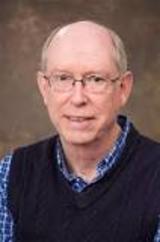John C. Tully
Sterling Professor of Chemistry and Professor of Physics and Applied Physics
 John Tully, B.S. 1964 Yale University, Ph.D. University of Chicago, faculty member at Yale since 1996: Your ability to identify simple rules that control the complex pathways of chemical change has kept you at the forefront of theoretical chemistry for decades. You created “Surface Hopping,” a theoretical chemist’s power tool that cuts through once-feared “non-adiabatic” processes like a chain saw. And you exploited it with surgical precision to dissect how chemical reactions occur at metal surfaces, a regime of great practical importance. Your talents were quickly recognized at the insanely competitive Bell Laboratories environment in the 1980s, where you mentored many of the nation’s top scientists as head (in succession) of the Physical Chemistry and Materials departments.
John Tully, B.S. 1964 Yale University, Ph.D. University of Chicago, faculty member at Yale since 1996: Your ability to identify simple rules that control the complex pathways of chemical change has kept you at the forefront of theoretical chemistry for decades. You created “Surface Hopping,” a theoretical chemist’s power tool that cuts through once-feared “non-adiabatic” processes like a chain saw. And you exploited it with surgical precision to dissect how chemical reactions occur at metal surfaces, a regime of great practical importance. Your talents were quickly recognized at the insanely competitive Bell Laboratories environment in the 1980s, where you mentored many of the nation’s top scientists as head (in succession) of the Physical Chemistry and Materials departments.
Your trajectory as a Yalie in itself has been quite a story. Starting out as an undergraduate in 1960 with less than stellar study habits (by your own account) and an interest in IM sports, you and a friend earned temporary suspensions for an alleged incident having to do with water balloons and the 1961 St. Patrick’s Day parade. You retire now, forty-four years later, as a Sterling Professor. Excom, take note!
Who would have guessed that your Davenport suitemate, Jim Rogers, would turn up years later as the “Investment Biker” financial tycoon? And we do appreciate your not holding a grudge about the C+ you mistakenly received in thermodynamics due to an uncorrected (even now!) clerical error. To the contrary, you held no grudges and maintained close ties with Yale throughout your journey. The first recursion involved more chance than design when the lab at which you were carrying out postdoctoral work in Colorado moved here during your tenure. And then in 1996 you joined the faculty at Yale, where, with your help, we now have the Yale Center for Research on Interface Structures and Phenomena (CRISP), and where your advanced courses in quantum mechanics and statistical mechanics stand above the rest, due to your clear explanations of nuanced ideas inaccessible to most.
We are grateful that you returned to your alma mater to provide a confident voice in crafting a vibrant and forward-looking role for physical chemistry in the rapidly changing landscape of contemporary science. And we thank you for reminding all of us that young people grow and develop and that any undergraduate caught doing hijinks might well be a future intellectual star. As you retire from the college where you started many years ago, your proud colleagues hope that you will continue to hop at the top of your game, wherever the surfaces may take you.
Tribute Editor: Penelope Laurans